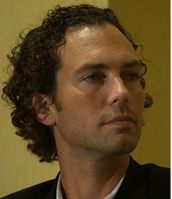 A year ago, Fortune reported that billionaire investor Tim Draper would no longer be actively investing on behalf of DFJ, the firm he cofounded in 1985. As the news rippled throughout VC circles, Draper wrote StrictlyVC to clarify that he was “not leaving DFJ. Ever. I am just skipping a fund to do some work building Draper University and experimenting with new models for venture capital. He added: “I will of course be an investor in any new fund we create.”
A year ago, Fortune reported that billionaire investor Tim Draper would no longer be actively investing on behalf of DFJ, the firm he cofounded in 1985. As the news rippled throughout VC circles, Draper wrote StrictlyVC to clarify that he was “not leaving DFJ. Ever. I am just skipping a fund to do some work building Draper University and experimenting with new models for venture capital. He added: “I will of course be an investor in any new fund we create.”
Draper, already known for his boundless energy, has seemingly been in overdrive since. In addition to his involvement with his 1.5-year-old Draper University — once characterized as an “unconventional boarding school for aspiring tech moguls” — Draper has become a highly active seed-stage investor. He’s betting heavily on bitcoin, too. In fact, in July, he purchased the 30,000 bitcoin seized when the feds took down the online drug bazaar Silk Road in October 2013. That’s saying nothing of his efforts this year to get an initiative on the California ballot to carve the state into six “startup” states. (It failed to qualify.)
How does he find the time? StrictlyVC asked Draper if he could answer a few questions about the past year; we emailed this past weekend in an exchange that has been edited lightly for length.
Last year, you said you decided to “skip a fund” at DFJ. How are you feeling one year later?
Everything I do helps all my funds, whether they be DFJ or Draper Associates [Draper’s seed fund].
Draper University; Boost.vc [son Adam’s investment fund], Hero City [Draper University’s coworking space]; and my long history in the VC world have all become an amazing source of deal flow.
What’s been the best part about this past year? What’s been the most challenging?
The best part is that I am able to innovate in the finance world. There are some things that can be done better for the entrepreneurs, and some that can be done better for the LPs. There are also some real technological innovations that are happening that I have been able to identify and apply to venture capital [including around bitcoin].
Also, [Draper University] has provided me a new vehicle for investment, new contacts I never would have made without it, and innovations I never would have seen without it.
The most challenging [thing for me] has been the sheer volume of opportunities I now have for investment.
You seem to be investing more actively than ever.
I think I am at my normal pace.
Would you ever raise institutional funding again?
Yes.
What percentage of your bets this past year have been bitcoin-related?
Maybe 20 percent and rising.
When you successfully bid on those 30,000 bitcoin, you told Dealbook that you wanted to provide liquidity to markets that have been hamstrung by weak currencies. First, have you ever disclosed how much you paid? More importantly, how are you executing on that plan?
We have done it. [Editor’s note: Here, Draper points me to his portfolio company Mirror, formerly Vaurum, an exchange platform for bitcoin investors.] And the price I paid for the bitcoin was higher than the current price, but my belief is that the price of bitcoin will exceed $10,000 within three years because the infrastructure is being built that will lay the groundwork for universal adoption. We will be using bitcoin for transactions and all we will know is that the transaction was made faster, smoother and cheaper than it would have been with just fiat currency.
Will you invest as actively in bitcoin in 2015 or have you covered a lot of your bases at this point?
This is just the tip of the iceberg. I expect bitcoin and the blockchain to be as prevalent in banking, commerce and finance as the Internet is in information, communications and software.
A lot of very smart people are divided about bitcoin. Like you, Marc Andreessen is a famous bull. In contrast, Peter Thiel recently said that he’s skeptical, that it’s “not obvious how easy it is to get a seamless payment system attached to [bitcoin].”
It is happening. I look forward to giving Peter a tour of Draper University and Hero City. Marc has already been there.
Andreessen and Thiel have also become very public figures. Meanwhile, you did a lot of press around your Six Californias initiative, but as an investor, you seem to have pulled back.
We just finished up another amazing session at Draper University. We are challenging the count at Six Californias. Draper Associates has been making some brilliant investments that I expect to have even greater outcomes than those I have made in the past. We have news cycles, too.:)
Your three children are now making their own startup bets. What’s the best piece of advice you’ve given them about being investors in Silicon Valley?
Yes, Jesse, the Valley Girl, is one of the top supporters of women in entrepreneurship, and she has made some exciting investments. My son Adam is running Boost.vc, and my son Billy works with me making investments for Draper Associates. They all look at the world as something that can be improved through entrepreneurship. [The] best piece of advice [I’ve given them]: “Fail and fail again until you succeed.”
Sign up for our morning missive, StrictlyVC, featuring all the venture-related news you need to start you day.









